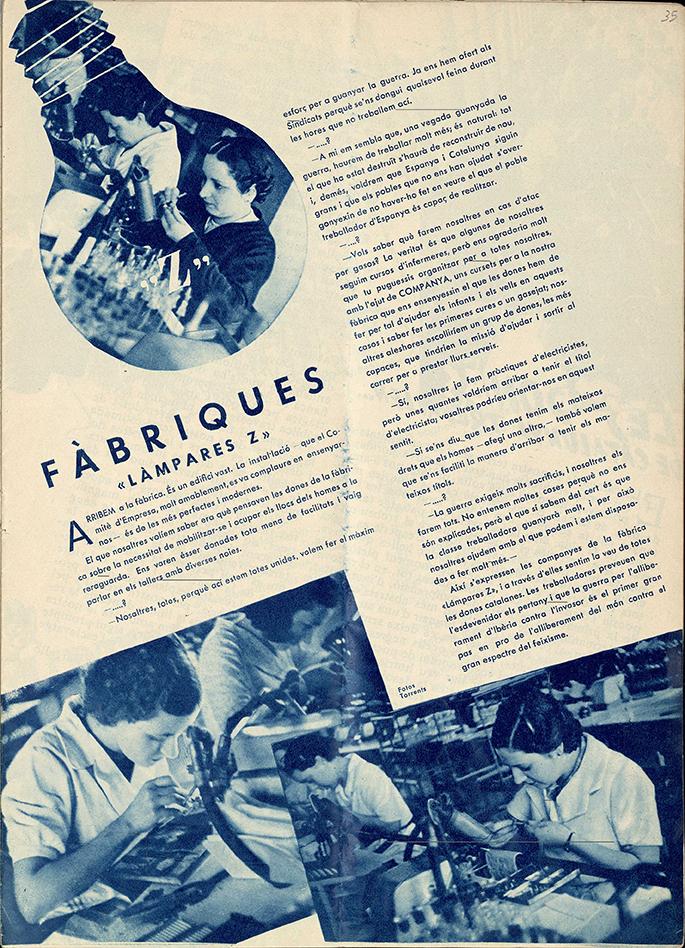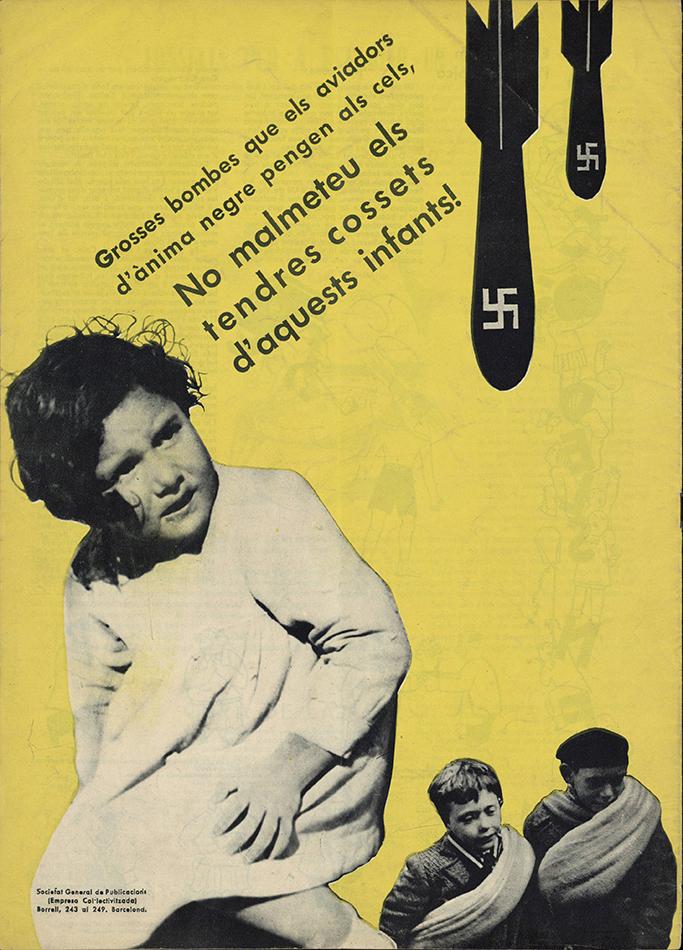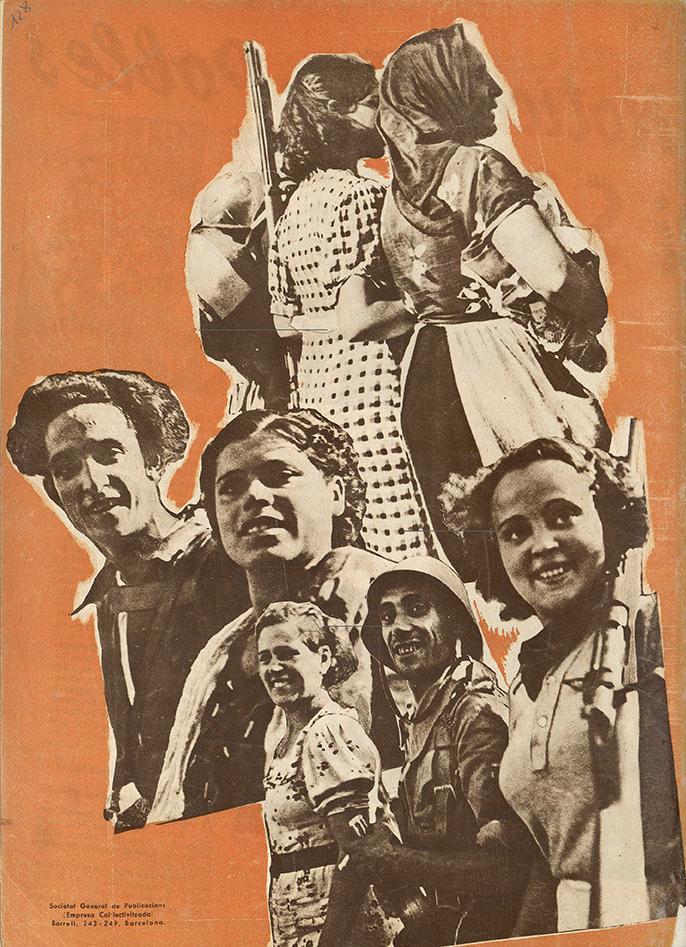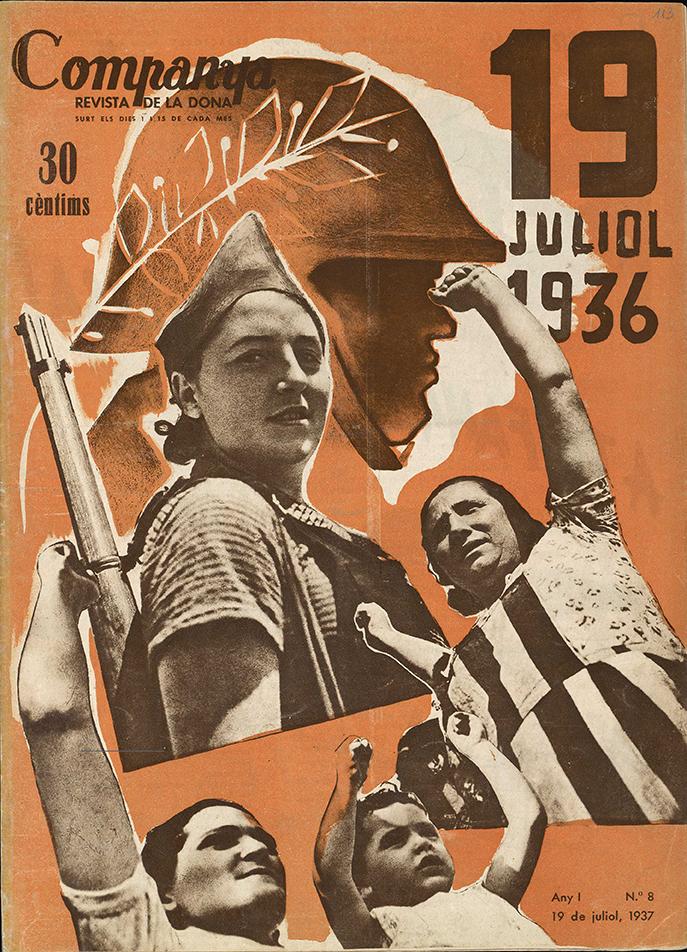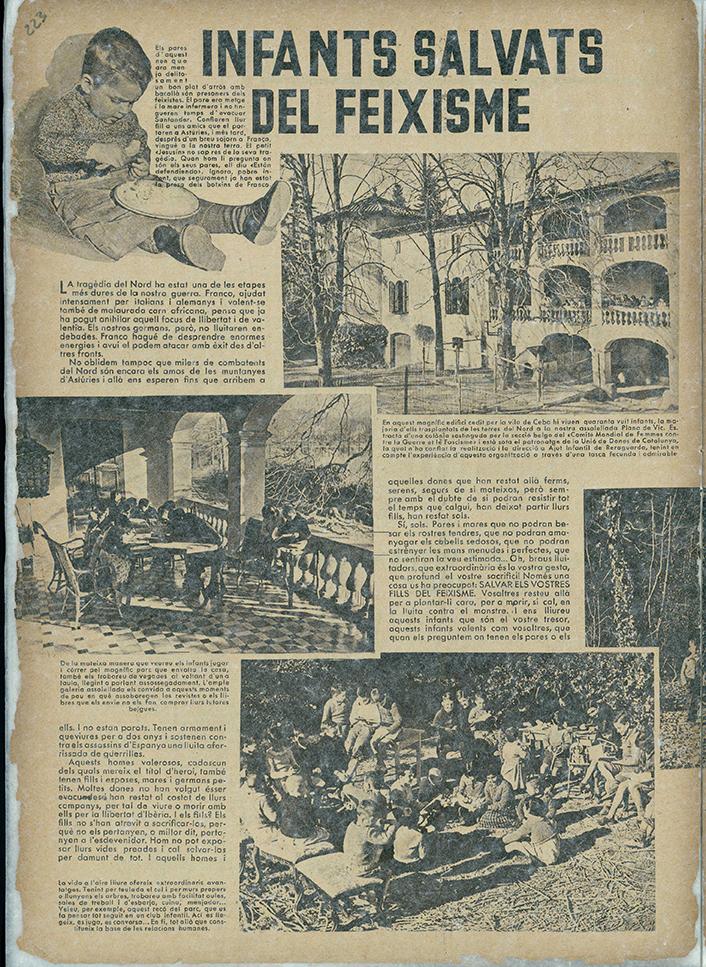Companya
The first issue of Companya. La Revista de la Dona came out on 11 March 1937. It was published on a fortnightly basis until January 1938, when it became weekly. A total of 18 issues were published until 8 March 1938. Produced in Barcelona, it was also distributed in other Catalan towns. The editorial team consisted of M. Lluïsa Algarra, M. Lluïsa Bargés, Aurora Bertrana, Lena Imbert, Eloïna R. Malasechevarría and Montserrat Martínez.
The magazine was the mouthpiece of the Unió de Dones de Catalunya [Women’s Union of Catalonia or UDC], headed by M. Dolors Bargalló. At the time, the association had more than 30,000 members of various ideologies united by their anti-fascism, although the communists had the greatest influence over strategy. The UDC’s action was based on mobilising women in the rearguard.
Companya was an illustrated magazine with just a handful of permanent sections (the editorial, the current affairs page, the page devoted to home and fashion, and literary contributions) and many that were only vaguely defined and non-recurring. It also included monographic issues dedicated to childhood, the anniversary of the USSR or, in the last case, International Women’s Day. Its design went through three stages, which can be clearly differentiated by the cover.
The first, encompassing issues 1 to 8, was conceived by Michel Friedfeld, a French brigade member and member of the Sindicat de Dibuixants [Draftsmen’s Union] of the Unión General de Trabajadores [General Union of Workers, or UGT]. It is characterised by the use of colour, front- and back-cover photomontages, and a rich inside composition (layout of the photographs, use of watermarks and illustrations for virtually every article). Although the cover and some drawings were credited to Friedfeld, most of the remaining photographs were uncredited. Nevertheless, some credits can be found for the little-known WaRo firm, as well as sporadic contributions by Torrents, Capella, Campañà, Sánchez Català and Piquet. Tísner, Goñi and Josefa Maynadé contributed drawings.
In issues 9 to 15, none of the photographs were credited, and the cover featured an image against a coloured background. There was an overall decline in quality and technical skill, and the photomontages were eliminated. Finally, the last three issues featured a single photograph occupying the entire cover, as well as improvements to the layout of images and text inside.
